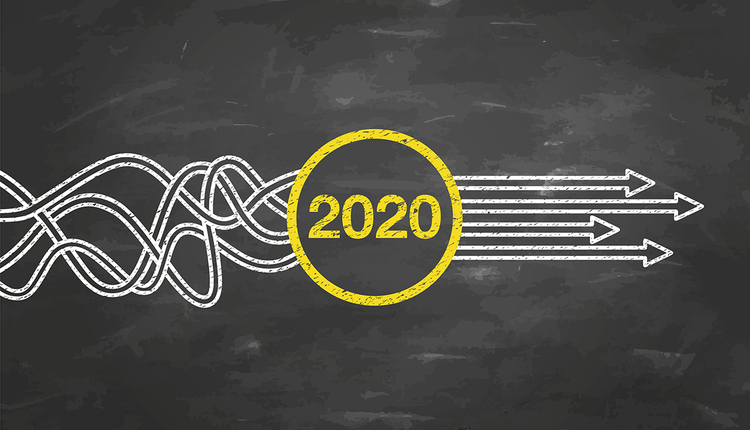While the answer to the question posed in the title is technically “yes,” it is not as definitive as you may think. Guaranteed services are overvalued, overused, and result in unnecessary expense. Don’t believe me? Let’s find out why this is the case and what shippers can do to change it.
First, let’s qualify this concept a bit. Guaranteed delivery services are very much needed for time-critical items such as medical supplies, high-value goods, mechanical parts, etc. But are they required to ensure a pair of jeans is delivered on time? I don’t think so, at least not as often as e-commerce shippers use these services, which is our focus for this article.
Guaranteed and Non-Guaranteed Service Definition
Guaranteed parcel delivery services offer a money-back guarantee (MBG) if a package shipped via such a service does not deliver by the carrier-stated guaranteed date and time, which means the shipper is eligible for a refund of transportation charges (or credit if the charges are not yet paid). We will focus on the most commonly used services by e-commerce shippers, such as FedEx and UPS Air and Ground services (other carriers do offer guaranteed services, but they are less prominent and/or may be by contract only). For example, FedEx Standard Overnight is guaranteed the next business day by 8PM to residences… unless one of dozens of exceptions occur (more on this later).
Non-guaranteed services are exactly as they sound in that they offer no MBG nor opportunity for a guaranteed service refund (GSR). Common non-guaranteed services include postal workshare services (UPS SurePost and Mail Innovations, FedEx SmartPost, DHL eCommerce, Pitney Bowes), USPS First Class Package and Priority Mail, and some regional carrier services.
Psychology Behind the Delivery Guarantee
There are plenty of valid reasons to use a guaranteed service, such as shipping a customer order from New York to California for next day delivery; however, there is plenty of psychology at work here, as well. To a certain extent, I blame FedEx. Over the years, slogans such as "The World on Time" and the ever popular, "When it absolutely, positively has to be there overnight" have conditioned our thinking that we must use guaranteed services if we care at all when a package delivers. A guarantee makes us feel confident and secure; after all, we will get our money back if something goes wrong… right?
A perception still exists by e-commerce shippers and consumers (although it is declining) that only a guaranteed service, especially Air, can provide a fast, predictable delivery experience. Many customers continue to think that by selecting 2-Day delivery in checkout, they are paying for a guaranteed 2-Day shipping service, when in fact they are paying for prioritized order processing. Although it is not as prevalent with shippers, there can still be a sense of remorse or guilt by not using a guaranteed service to ship customer paid expedited orders. Again, customers are paying for prioritized order processing; the delivery service should not matter if the delivery performance of the selected service meets the customer’s expectations.
The Diminishing Value of Guaranteed Services
The value of the MBG has been on a downward trend for quite some time, which is unlikely to change any time soon. FedEx and UPS go to great lengths to ensure shippers do not receive a refund and/or make it incredibly difficult to do so. Does this excerpt from FedEx’s service guide instill confidence in the value of their MBG? “This guarantee can be suspended, modified or revoked at our sole discretion without prior notice to you.” I don’t think so.
The decline began with a list of exceptions that render a package ineligible for an MBG, such as incorrect address, inclement weather, and customer not available. Over time, this list grown exponentially, and FedEx and UPS have become incredibly adept at identifying and recording these exceptions, and consequently denying GSR requests.
As shippers began to enlist third-party services to assist with GSR filing, the carriers responded with contract language that attempts to waive the right for a shipper to file for GSRs. Their rationale for this is that GSRs are time-consuming for all parties and, in lieu of GSRs, value is provided elsewhere in the contract through discounts and incentives. Good luck holding them accountable for that.
Finally, blackout periods in which the MBG is suspended have become more impactful in recent years, often occurring during the highest volume and most critical times of the year for e-commerce shippers. For example, FedEx Ground and Home Delivery MBG was suspended for 23 days in December 2019 (12/2-12/24).

The above table illustrates how the MBG opportunity can be whittled down to practically nothing. Using annual FedEx Home Delivery volume and spend of 100,000 packages and $800,000, respectively, and a raw on-time percentage of 94% (irrespective of delivery exceptions), the initial MBG opportunity is $48,000 on 6,000 late packages. Much of the opportunity is then removed as 5,000 of the packages contained a delivery exception scan from FedEx, reducing the MBG eligible amount to $8,000. Take out an additional 15% of volume shipped during the December suspension period and we are left with 850 packages and $6,800 eligible for MBG.
The Rising Value of Non-Guaranteed Services
Upon their inception in the early 2000s, and for several years thereafter, postal workshare services (e.g. FedEx SmartPost, UPS Basic/SurePost) were vastly different than guaranteed Ground services. Transit was slow, delivery was unpredictable, and package scanning and tracking produced a painful customer experience. But these services were economical (relatively speaking) and were a perfect fit for the early days of free shipping, when delivery times of five to seven business days were sufficient.
Fast forward to today, and it is a very different story. Due to compounding annual volume growth and subsequent carrier network efficiencies, transit times have improved dramatically, as has delivery predictability. In some cases, UPS and FedEx now deliver postal-workshare packages through their own networks, offering Ground transit times at a postal workshare rate. DHL eCommerce offers a day-definite postal workshare service, Expedited Max, which provides national three-day delivery. And let’s not forget about the USPS, which offers the best value for packages under one pound via its First-Class Package service. As an example, would you rather pay $10 for an eight-ounce, guaranteed 3-Day Air package, or $4.00 for the same package via DHL Expedited Max, perhaps conceding one to two percent in raw on-time delivery? While these services do not offer an MBG, if used correctly, they can offer superior value to guaranteed services.
Shippers also now have more tools and resources to leverage the value of these services. Access to TMS and multi-carrier shipping solutions enables more precise carrier service selection. Massive amounts of delivery performance data allow shippers to measure results at a granular level (e.g. 5-digit ZIP Code) and incorporate results as a feedback loop to TMS routing logic. Post-purchase tracking solutions normalize the customer experience across delivery services. All of these enhancements, combined with the aforementioned improved service levels, have dramatically increased the value of non-guaranteed services in e-commerce delivery.
Steps to Optimize Guaranteed and Non-Guaranteed Services
1. GSR filing: For the volume that must ship via guaranteed services, retain the right to file GSRs through contract language, as well as explore third-party GSR filing services.
2. Rely on data to guide decisions: Don’t allow misconceptions and myths that surround delivery guarantees to influence your decision-making process. Instead, rely on service value calculations and delivery performance data to incorporate the proper service selection logic to minimize cost.
3. Measure the true value of guaranteed services: Measure the financial benefit of the MBG in your parcel program. Is the cost per package worth the “security” of having an MBG, or is the cost per package delta to non-guaranteed services large enough to explore other options?
4. Intensely evaluate non-guaranteed services: Require carriers to provide ZIP Code level delivery performance data, test non-guaranteed services and measure results, expand those services appropriately and impact the bottom line (without materially impacting customer delivery experience).
Guaranteed delivery services can be a necessary component of an e-commerce parcel program; however, if you want to extract maximum value from your program and impact the bottom line, look beyond the “perception” of the guarantee and find value in alternative services. It’s there; you simply have to look for it.
Nate Skiver is the founder of Level Playing Field Spend Management, a parcel consulting company which provides value for its clients through creating parcel shipping programs which reduce expense, while delivering a positive customer experience. Prior to founding Level Playing Field, he spent more than 15 years focused on building, executing, and managing parcel transportation programs for leading global apparel companies. He can be reached at nate@lpfspendmanagement.com.
This article originally appeared in the March/April, 2020 issue of PARCEL.
















